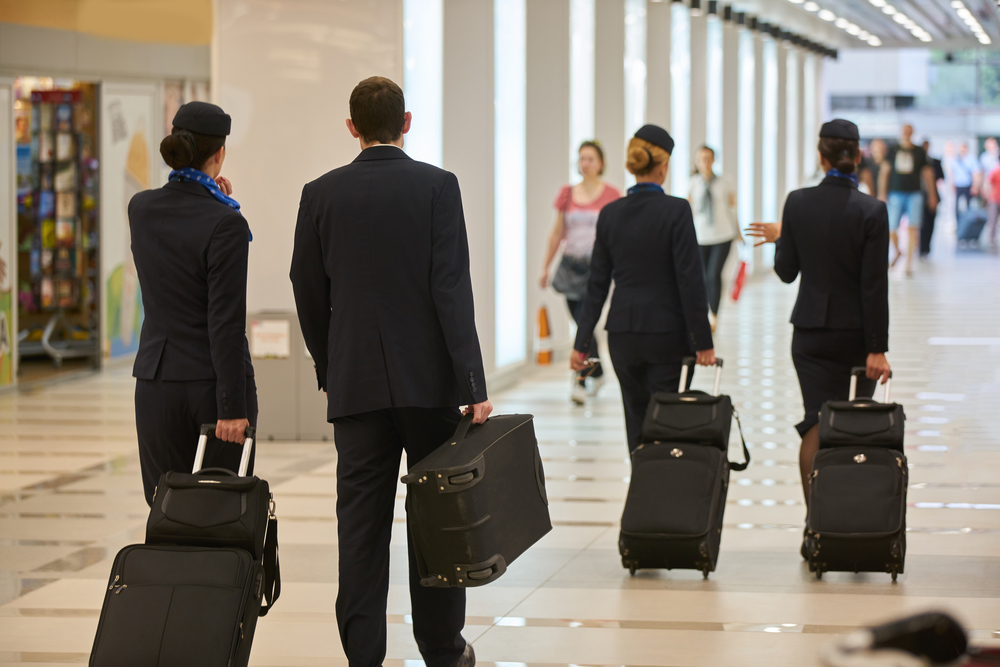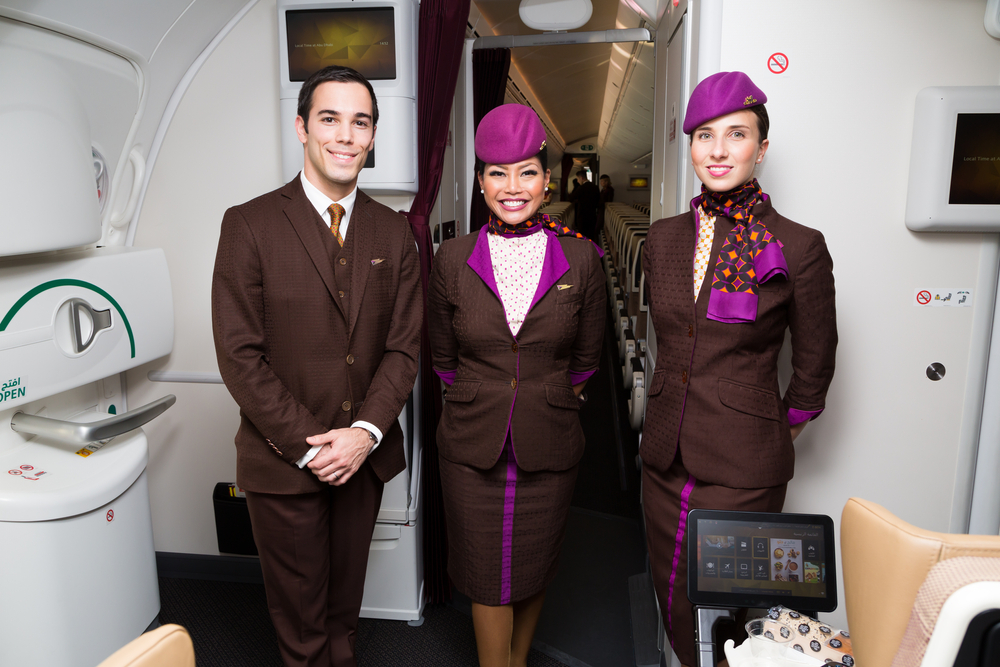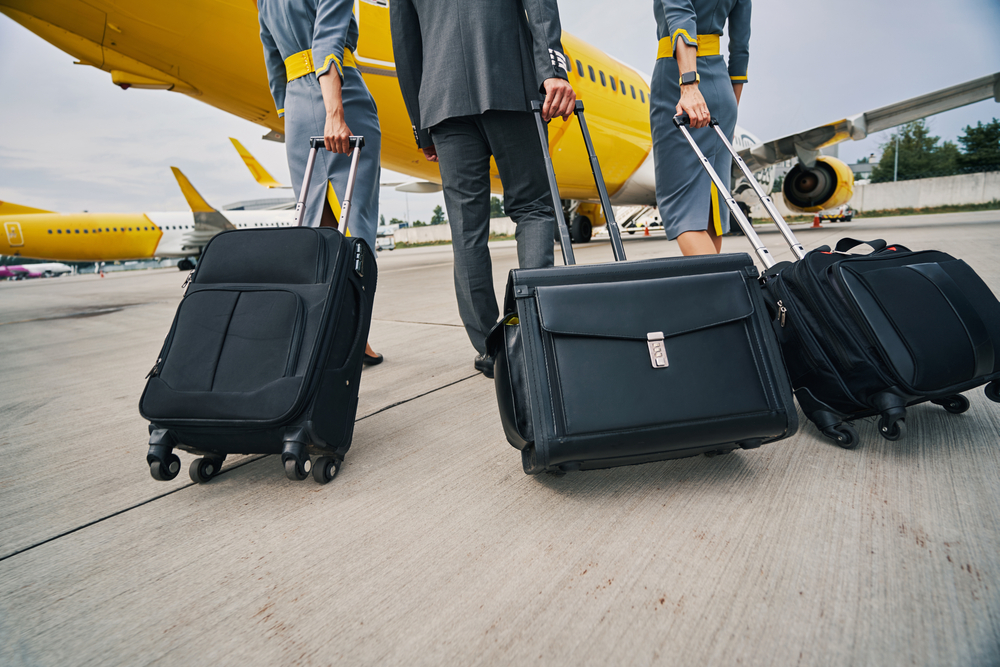Becoming a cabin crew member is a dream job for many, especially those drawn to the excitement of international travel and working in a multicultural environment. But beyond the glamour of the opportunity to explore new destinations, many may wonder, is this a long-term career? What are the real prospects for professional growth in this field? How does this role evolve over time, and what can you achieve by pursuing a career as a cabin crew?
In this article, we explore the career progression opportunities for cabin crew, tracing the path from entry-level roles through mid-level positions and onward to corporate job opportunities.
Table of Contents
Entry-level: Junior Cabin Crew or Flight Attendant
The role of Junior Cabin Crew or Flight Attendant is the first step for anyone looking to start an aviation career. It is a great way to gain experience and build a future in the skies. Some aspiring pilots even work as cabin crew first to gain a better understanding of airline life before starting flight school.
So, how do you become a Junior Cabin Crew? Most airlines require candidates to be between 18 and 21 years old and to have a high school diploma or equivalent. To launch this career successfully, you will also need strong communication skills and fluency in English as well as other languages.
Many airlines favor candidates with prior experience in customer service or hospitality. You must also meet specific height and reach requirements to ensure you can access safety equipment on board.
You can read more about airlines’ requirements for cabin crew here.
Once hired, you will need to complete airline training, usually lasting between four and eight weeks. This training covers safety procedures, first aid, emergencies, aircraft cabin operations, and customer service. After passing exams, you officially become part of the cabin crew team!
What are the responsibilities of a Junior Cabin Crew member?
They ensure passenger safety, serve food and drinks, conduct safety demonstrations, and provide assistance during emergencies. In all situations, including turbulence, medical incidents, or other challenges, they must remain calm and professional.
When can a Junior Cabin Crew get promoted?
To manage fatigue and ensure safety, EASA (European Union Aviation Safety Agency) limits cabin crew activity to a maximum of 900 flight hours per year, with no more than 100 hours allowed within any 28-day period. Because of this, Junior Cabin Crew usually flies for between 600 and 900 hours a year, depending on the airline’s routes and schedules. The exact hours can change depending on the season and required rest time.
This means that it usually takes about one to two years of flying before a Junior Cabin Crew member can be promoted to a full Cabin Crew role.

Mid-level: Senior Cabin Crew or Purser
About two years into a career as a Junior Cabin Crew member, promotion to Senior Cabin Crew, also known as Purser, becomes possible. This career advancement usually occurs after two to five years of service, depending on the airline and individual performance.
What responsibilities does a Senior Cabin Crew member have?
Senior Cabin Crew takes on a wider range of duties beyond those of Junior Cabin Crew. They oversee the entire cabin team to ensure smooth operations during the flight. This includes coordinating the work of all flight attendants and managing the inflight service to maintain high standards.
They also handle difficult or sensitive passenger issues, stepping in when problems arise to find quick and effective solutions. Another important duty is supporting the flight deck crew by relaying information and assisting with any needs related to pilots, such as preparing documents or coordinating communications.
Senior Cabin Crew are also responsible for conducting final safety checks and ensuring compliance with all regulations. They manage inventory, oversee catering, and report any issues that could affect the flight’s operation or passenger comfort.
When can you get promoted to Senior Cabin Crew?
Promotion to Senior Cabin Crew comes with many benefits. These include better pay and better chances to grow in the career. However, moving from Senior Cabin Crew to Cabin Manager usually needs between 3,000 and 5,000 flight hours. But flight hours are not the only factor. Airlines also look for strong leadership skills and good performance.
Rules can differ by airline, but many years of solid work as Senior Cabin Crew are needed before moving to the next level.
Cabin Manager or Inflight Manager
The next step after serving as Senior Cabin Crew is promotion to Cabin Manager or Inflight Manager. In terms of responsibility, the difference between Senior Cabin Crew and Cabin Manager is minor. This is because it largely depends on the type of aircraft the flight attendant works on.
What is the difference between a Senior Cabin Crew member and a Cabin Manager?
The difference between these two roles lies in the aircraft type and flight duration. Narrow-body commercial aircraft have fewer cabin crew members on board. For example, a Boeing 737-800 is staffed with up to four flight attendants, while Airbus A320 family aircraft operations may require up to six, depending on the plane configuration, as per EASA requirements.
In these cases, the Senior Cabin Crew members serve as the highest-ranking cabin staff. They take on both team leadership and overall cabin management responsibilities due to the smaller crew size. In this context, the Senior Cabin Crew and Cabin Manager roles share the same duties.
But when it comes to wide-body aircraft operations, the role of Cabin Manager has a different meaning. Wide-body aircraft like the Boeing 777, Boeing 787, Airbus A330, Airbus A350, or Airbus A380 must have larger crews due to their size, larger passenger capacity, and longer flight durations, making a dedicated Cabin Manager necessary to oversee operations.
So, you may ask what are the exact responsibilities of a Cabin Manager? On wide-body aircraft, the Cabin Manager or Inflight Manager is a separate position responsible for overseeing the entire cabin operation. The Senior Cabin Crew leads smaller teams or aircraft cabin sections and reports to the Cabin Manager. In the meantime, the Cabin Manager ensures safety protocols are followed, service standards are met, and the overall passenger experience is excellent.

Alternative roles for Cabin Crew: Training and recruitment
At some point in their career, active flying as cabin crew may no longer be the best fit. So, what happens next? Does this mean the end of a long-term career in aviation? Absolutely not!
There are several alternative roles that offer great opportunities for those transitioning from active flying or seeking promotion. For example, a Senior Cabin Crew member or Cabin Manager can move into positions such as Cabin Crew Trainer or Recruitment Specialist within the airline. Let’s take a closer look at what these roles involve and the benefits they bring.
What are the duties of a Cabin Crew Trainer?
A Cabin Crew Trainer is responsible for teaching new recruits safety procedures, emergency protocols, first aid, and customer service skills. This role requires strong communication skills, patience, and a deep understanding of cabin operations. Since former Senior Cabin Crew members or Cabin Managers are most familiar with specific airline standards, airlines often promote them to the role of Cabin Crew Trainer.
To qualify, several years of experience as a Senior Cabin Crew or Cabin Manager are needed. Most airlines provide specialized training and instructor certification for this position.
From Cabin Crew to Recruitment Specialist
Similarly, a Recruitment Specialist supports airlines by identifying and selecting the best candidates for cabin crew positions. They are responsible for managing cabin crew recruitment events, screening applications, conducting interviews, and assessing both skills and personality fit.
Overall, both of these ground-based roles offer fewer nights away from home and a more regular daily routine. It can become an attractive option for cabin crew members who want to stay connected to the aviation industry while reducing time spent flying.
Corporate roles
For those who want to stay in aviation but move beyond cabin roles, career progression can lead to corporate positions. Experienced crew members may become Inflight Service Managers, overseeing cabin operations across fleets, developing service procedures, and ensuring regulatory compliance.
Others explore roles in crew planning, marketing, customer experience, or even sales departments, using their knowledge of passenger needs to improve airline services.
Choosing a corporate path does not always mean giving up flying. Once cabin crew gain experience and show the right skills, they can often continue flying while taking on additional responsibilities if this fits the internal airline’s policies. This way, you can advance your career with new duties but remain active in the air by keeping up with recurrent training.
In summary, a career as a cabin crew can offer much more than just flying! This career provides a clear path for growth and diverse opportunities within the aviation industry. Starting from entry-level roles, you can progress to senior positions, management, and even specialized corporate jobs, all while gaining valuable skills and experience. Whether you choose to stay in the air or transition to training, recruitment, or corporate departments, the industry welcomes your development and dedication!

